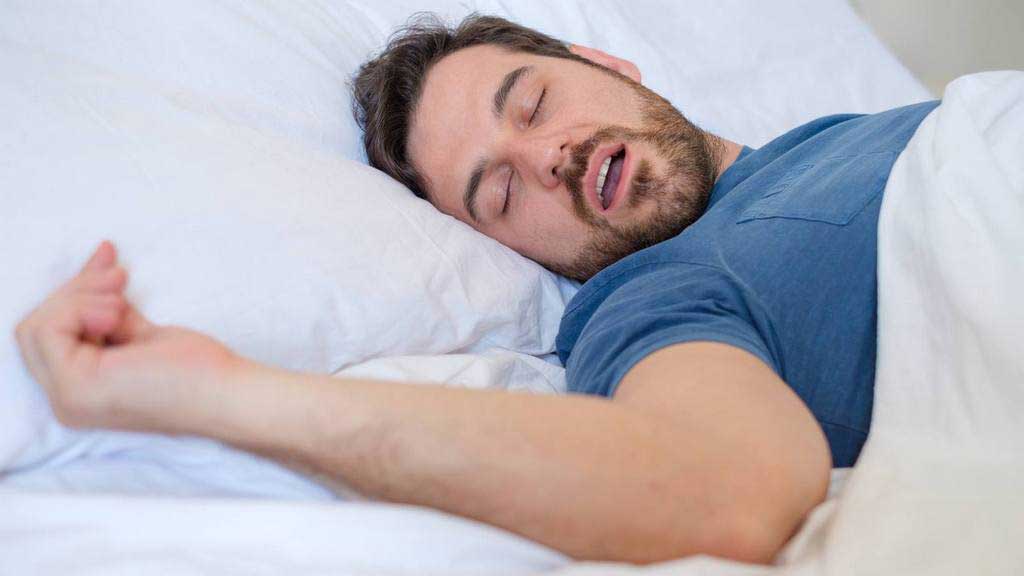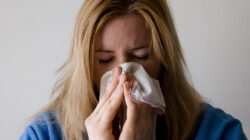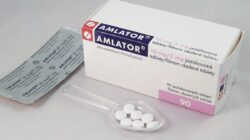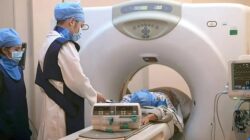Sleep disorders come in various types and conditions, which can lead to different symptoms to the situation. It does not mean everything is dangerous, but it is best to know what happens to your body. Among those that people less know about is sleep apnea. It is a normal condition but can get serious due to its effect. To be aware of it, here are sleep apnea definition and other details.
Get to Know the Definition of Sleep Apnea
It is easier to say that sleep apnea is a health condition that causes the person to stop breathing while they are sleeping. It is a widespread condition, which makes people wake up to take a deep breath. The condition may happen at any time during sleep, which forces the person to stop breathing and restart again while sleeping.
The condition can prevent the body from getting enough oxygen, which later affects the body’s health and leads to sleep deprivation. Most of the time, people with this condition likely snore or gasp during sleep. Sometimes people also see the symptom and condition as poor-quality sleep with the effect of excessive daytime sleepiness.
The name itself is from the Greek word for breathless or Apnea. How does it happen? The best definition of why it happens is because of a blockage of the airway or because the brain cannot control breathing. Those two causes explain the two types of sleep apnea, obstructive sleep apnea, and central apnea.
The situation that leads to short breath cause a body survival reflex, which forces the person to wake up to resume breathing. The reflex is the source of your ability to stay alive, but it also constantly interrupts the sleep cycle. In the long term, the condition leads to an inability to get restful sleep and stress on your heart.
Who Does the Condition Affect of Sleep Apnea?
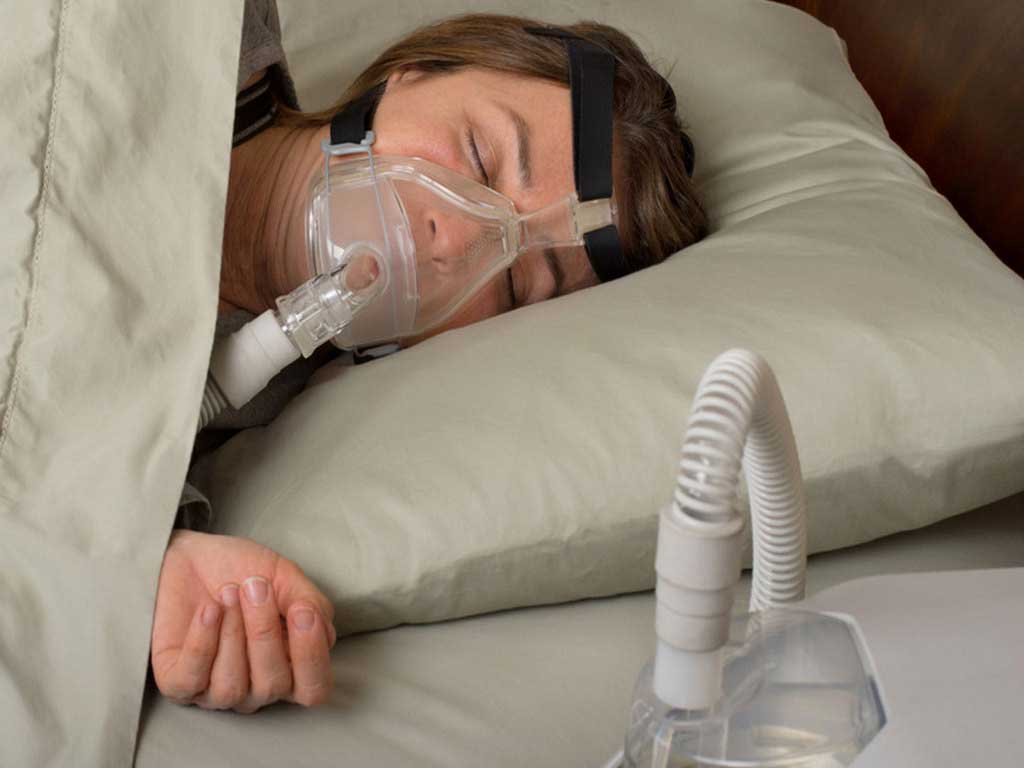
Due to its widespread condition, sleep apnea can happen to anyone. It is not genetic but can happen due to several health conditions. But there is a certain circumstance (obstructive apnea) in how sleep apnea affects certain groups of people. Those people are likely older, obese, and people who are Hispanic, Asian, or black descent.
But central sleep apnea also likely happens to people who are 60 years old. People who take pain medication, have a heart condition, people with CPAP, and people who live in high altitudes. But again, both types of sleep apnea definition can happen to everyone. Especially with how the estimation reaches about 5-10% of people worldwide.
Causes of Sleep Apnea You Should Know
Obstructive sleep apnea happens due to the muscles in the back of the throat relaxing when sleeping. These muscles support the soft palate or the triangular piece of tissue hanging from the soft palate. Those pieces are the side walls, tonsils, and uvula. When the muscle relaxes, it obstructs the narrow airways. It will close and make you can’t get enough air into your blood.
This condition will force the person to briefly awake to reopen the airways. It is not necessarily fully awake, just a brief moment that makes the person breathe again. When seen from a different perspective, the condition might appear as snorting, gasping, or choking. The stopping can happen a lot every hour all night, which leads to a restless body.
Central sleep apnea is about the brain’s inability to send signals to the breathing muscles. It is different from obstructive sleep apnea since your brain does not take or make effort to breathe for a short period. While the block is less disturbing, central apnea will awaken you and likely make you unable to sleep again.
What Are The 6 Signs and Symptoms of Sleep Apnea?
1. Feeling Tired and Exhausted
Due to the constant waking up at night and when sleeping, the condition can make the person feel extremely tired during the day. Sometimes, they can feel severe sleepiness and cause drowsiness to do daily activities. So, people with apnea commonly show this symptom as the main indication of the condition.
2. Snoring, Gasping, or Choking When Sleeping
Since the person with the condition has difficulties breathing during sleep, they likely appear as snoring, choking, or gasping. These are the common features of sleep apnea, but this does not mean it always indicates the health condition. Some people might have sleep apnea without snoring at all.
3. Waking Up Repeatedly at Night
Some cases show that people with apnea will wake up repeatedly at night. In a light situation, they might wake up but not appear to remember. All because they only need to wake up briefly to restart their breathing. But people can also wake up and cannot fall back to sleep again. Something they also remember to have heartburn or needing to go to the bathroom.
4. Unusual Breathing Pattern
Even though the sleep apnea definition only indicates short breathing when sleeping, the effect can be seen in daily activities. The common symptom is unusual breathing patterns or Cheyne stokes breathing (CSB). This problem likely appears when the person has central sleep apnea, which causes the person to either breathe fast, deeper or shallower until stops altogether.
5. Disruption of Brain Function and Mood Changes
Since apnea disrupts the sleeping schedule and resting, the condition can affect the brain situation. In some situations, the condition can be followed by trouble concentrating, memory loss, or several other brain-related problems. It also includes mood changes, which appear as anger, depression, or anxiety.
Sleep Apnea Diagnosis and Test
Despite the common condition and easy-to-notice symptoms, it does not make the person can be diagnosis as simple as it is. It also goes with the fact that the treatment varies and depends on the specific type of apnea. So, a good diagnosis from a doctor should be done properly to determine the best treatment.
There are at least two ways in diagnosing the condition. One is through an overnight sleep study or polysomnogram, where the patient sleeps in a medical facility or test lab. They will use equipment to monitor their sleep, which also includes several tests involving heart rate monitors, breathing, brain waves, blood oxygen, and many more.
Some doctors or hospitals may also allow home testing. In this case, the person does not use several complex brain wave monitoring. However, it does not show or diagnose central sleep apnea. That is why, when the result does not show the condition of the patients, the doctor will recommend an oversight sleep study.
What Treatment Options are Available for Sleep Apnea
There is no exact medication to treat the condition. Depending on the severity and the sleep apnea definition the treatment will differ. However, there is no exact cure. Instead, the treatment helps reduces or prevent apnea events to happen. That is why many of the treatments will fall into a daily or nightly routine.
1. Non-Medical or Conservative Treatment
The conservative treatment focus on fixing what you already have. Some cause of sleep apnea is overweight, thus losing around 10% of the weight should help. Other solutions can also use nasal sprays, position changes, or medication changes. Treating underlying conditions such as heart failure might also improve the condition.
2. Wearing Mouthpieces
Mouthpieces or oral devices are another treatment that people can try or use if needed. A special mouthpiece for this condition is given to prevent obstructive sleep apnea, which happens when the soft tissue in the head or neck around the mouth and jaw closes the windpipe. The said mouthpiece help hold down the jaw and tongue.
3. Adaptive PAP and Ventilation
PAP or positive airways pressure is a device to increases air pressure inside the airways. It is a method and device that help treat obstructive, central, and mixed sleep apnea. The method works as the air pressure is pushing the windpipe open. However, it needs to be done and prescribed by an expert or doctor.
4. Surgery
As said in the sleep apnea definition and types, this condition is likely to happen to everyone. It also appears in different severity levels, which means some people might need complex treatment such as surgeries. In this case, surgeries capable to help cure the problem or improve the condition are jaw surgery, nasal surgery, somnoplasty, uvulopalato, pharyngoplasty, or tonsillectomy.
5. Nerve Simulator
A nerve stimulator is given as a treatment that stimulates the hypoglossal or the tongue. When used, the machine helps push the tongue slightly forward while sleeping. It prevents the tongue to relax and obstruct the windpipe. There is also some other simulation that is attached to the nerve under the jaw, or under the skin on your chest.
The purpose is the same, which is to stimulate your tongue from relaxing when sleeping. Some other similar nerve simulations are phrenic nerves, which are possible to control central sleep apnea. It is done by attracting nerve simulators on the spinal cord to the diaphragm, which helps control the exhaling and inhaling routine.
6. Medication
Some doctors might also provide medication, which helps stimulate or clear up the windpipe. Some of that medication can include respiratory stimulating drugs or hypnotic medication. However, there is no exact medication that fixes or cures sleep apnea. Instead, they are mainly to lighten the condition.
How to Prevention Sleep Apnea? Things to Avoid
In many cases, the prevention solution is pretty close to the conservative treatment. People who may have the condition need to practice good sleep hygiene. Some others include maintaining a healthy weight, managing other health conditions, and seeing the healthcare provider for a regular checkup.
If said bluntly, the red line of sleep apnea goes to personal health. Some doctors will say that the condition is preventable, and the best way to do it is to maintain health. Many patients with this condition have excess weight or obesity. Other than that, apnea likely appears as a complication of health conditions such as Type 2 diabetes, high cholesterol, and hypertension.
Living with The Condition
There are several aspects that every person needs to consider about the sleep apnea condition. the first one is how the condition is a long-term and chronic condition. But again, it depends on the person and the severity levels. Some people can improve their condition simply by reducing their weight, but others may have it as a lifelong condition.
It is also best to consider the complication of sleep apnea. A good measure of the condition and treatment should help prevent anything get worst or something severe and life-threatening. Some dangerous complications can include sudden cardiac death, daytime drowsiness, heart damage, and arrhythmias. But other than treatment, try to take care of yourself.
Consider making lifestyle changes, such as reducing your weight, eating healthy, don’t smoke, and having regular exercise. If you need treatment, plan and stick to it until you are better. You can also make them part of the routine to avoid complications. If you are not sure, it is always best to talk to the health provider and get a recommendation. Thus, you are not treating it without proper healthcare.
When to Contact A Doctor?
Many will say that sleep apnea is not particularly dangerous, as long as it barely affects your daily life. Most of the time, people with this condition will lose sleep time and feel tired in the morning. However, the condition can get worse since the cause of it is very deliberate and potentially indicate worsened health condition (ongoing health problem such as high blood pressure).
Your best bet to check and contact ER or Doctor is when you notice any symptoms of stroke or heart attract. These two are indications that the apnea has gone worst. Just as the sleep apnea definition, it is a short breathing condition that happens when sleeping. It can lead to deadly complications (heart attack and stroke) so an early diagnosis is recommended.
Considering how sleep apnea can go from practically harmless to a serious sleep disorder, it is always best to keep an eye on the condition. If you found the situation gets worst as time goes by, it is best to get it treated or fixed by the doctor. It is also good to reduce the risk, practice good sleep hygiene, and consider treatment as you find it needed.
- Tirzepatide and Hair Loss: Side Effects Explored - July 2, 2025
- Unlock the Mystery: Are Your Headaches a Sign of Hypertension? - June 24, 2025
- Boost Your Heart: Omega-3 and Blood Pressure Secrets - June 14, 2025
